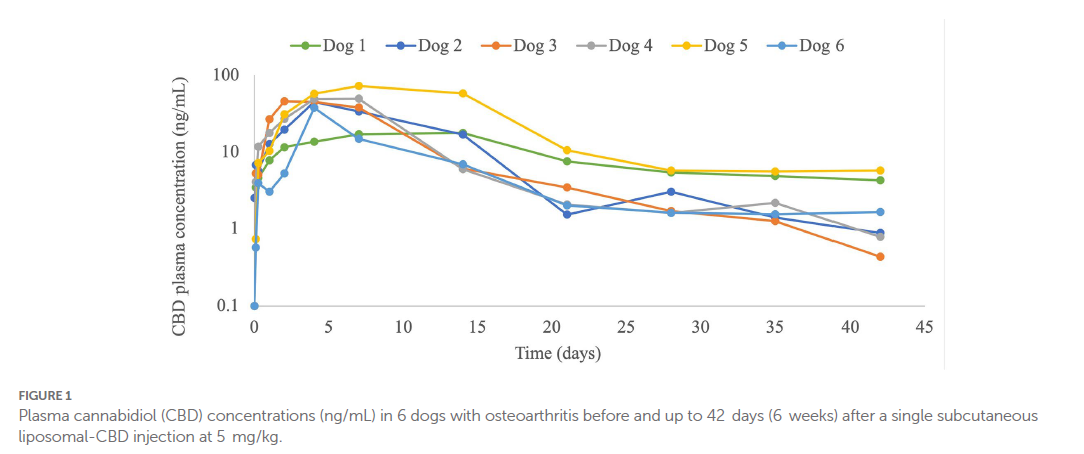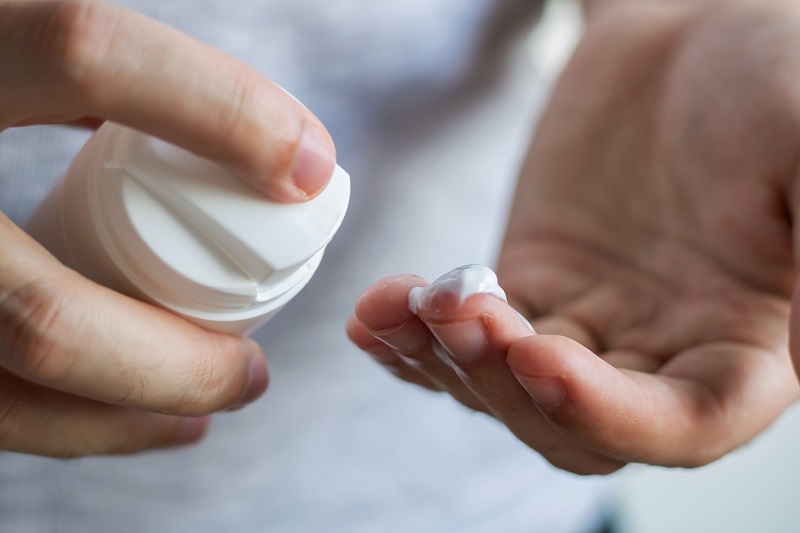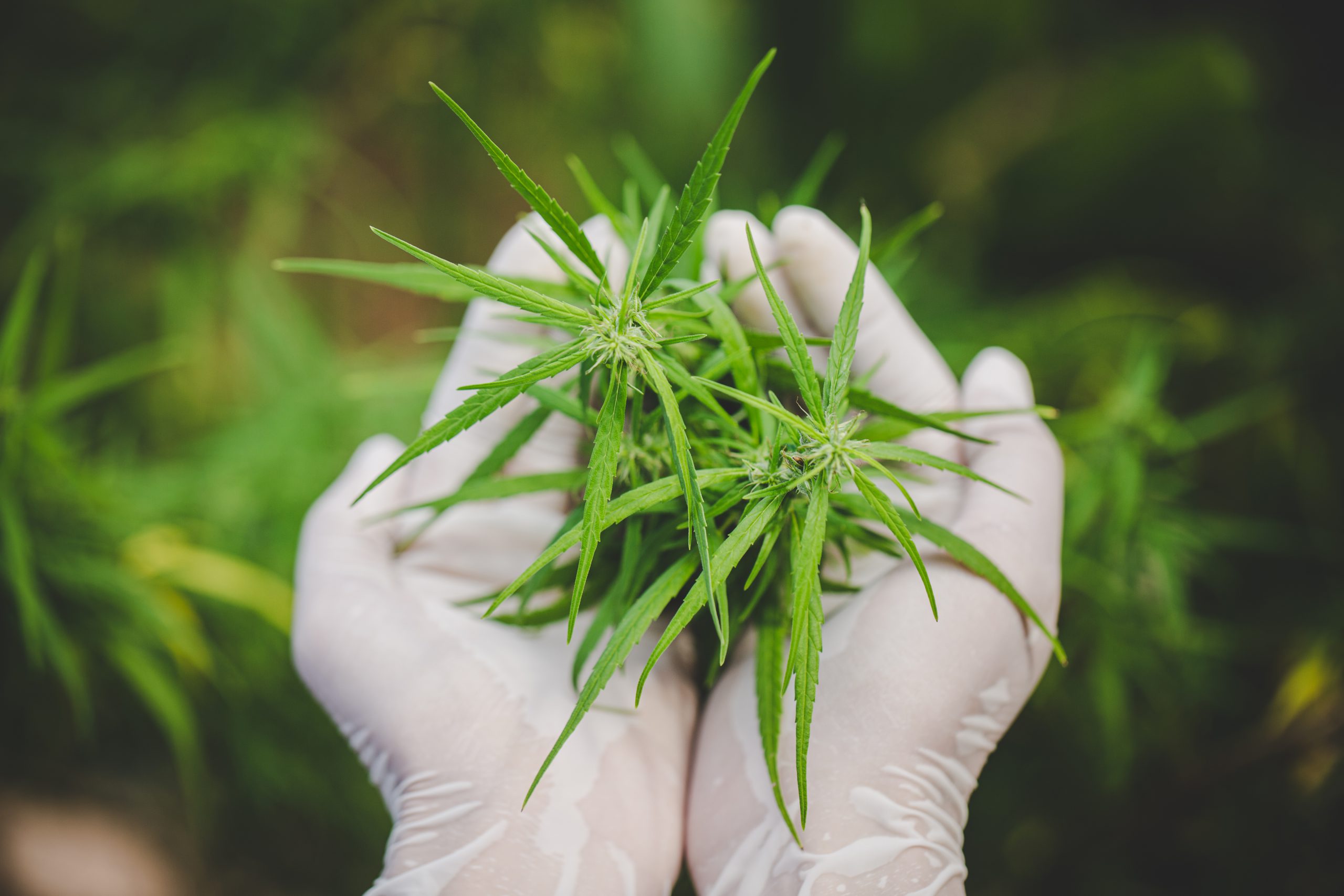Transdermal Administration of CBD Products Can Reduce Skin Inflammation

CBD is the shortened form for cannabidiol. This compound is one of the several ingredients – in fact, 1 of more than 100 ingredients – of the cannabis plant.
The cannabis plant is popularly known as marijuana. CBD is an active ingredient of the marijuana plant. CBD is the second such active ingredient to be most prevalent in the plant.
The concerns surrounding CBD as a compound that can cause a “high” are prevalent. But it needs to be understood that though CBD is an active ingredient of marijuana, it does not lead to a “high” state on its own.
For users that are concerned about the safety of CBD, the statement given by the World Health Organization should lend some assurance. According to the global public health agency, pure CBD has not resulted in any health problems for consumers – there is no proof of such damage to public health.
In addition, WHO states that CBD has not proved to be a compound that could cause substance abuse or dependence in humans.
Wellness benefits of CBD
Research on the role of CBD as a health-promoting compound is being conducted widely and aggressively. The contribution of CBD toward treating a wide range of health issues is being proved continuously by research.
Some health benefits that CBD has proven to address successfully include anxiety, insomnia, epilepsy, and chronic pain, including neuropathic and inflammatory pain.
A wide range of CBD products is now available in the market to address specific conditions, such as those mentioned above. CBD products are available in several forms, such as oil, sprays, roll-on, serums, and creams, for the convenience of consumers.
Some popular CBD products for pain relief include pain relief roll-on, pain relief spray, pain relief cream, and body oil.
A range of beauty and wellness products is also available in the CBD segment. There is growing consumer interest for products such as anti-aging facial serums, facial cream, facial serum, glow oil, recovery lotion, sleeping mask, face cream, and eye serum.
CBD for skin inflammation
Inflammation of the skin is a natural response of the body’s immune system to allergens and skin Infections. Inflammation may also be indicative of an underlying disease.
Some common skin conditions that have inflammation as one of the symptoms include acne, psoriasis, and dermatitis.
Skin inflammation may manifest itself in the following ways on the skin:
- Itchy or burning rashes
- Scaly or smooth rashes
- Redness of the skin
- Warm rashes
- Cracking or bleeding skin
- A raised or flat surface, or thickening of the skin, on the inflamed spot
The use of CBD for skin inflammation and skin disorders with an inflammation profile has become quite popular in recent years. While research is still underway, early results reveal cannabinoids, including CBD, to be promising compounds for treating conditions of inflammation on the skin.
CBD exhibits antioxidant and anti-inflammatory properties, which is encouraging a range of studies on its impact on skin inflammation. Initial research shows that cannabinoids can have a positive impact on inflammation caused by skin disorders such as psoriasis, allergic contact dermatitis, acne, dermatomyositis, and scleroderma.
According to experts, cannabinoid creams ease symptoms of itch caused due to inflammation. Studies show patients who applied cannabinoid creams on the itchy spot two times a day for three continuous weeks experienced relief from severe itching. Experts believe that the reason behind the relief could be because cannabinoid creams addressed the issue of dry skin that caused the itch.
Initial research on the effects of cannabinoids on skin inflammation has shown positive results. CBD, in particular, has shown to be a non-toxic alternative in the treatment of inflammation. Also, the compound results in only minor side-effects. More research results on the efficiency of CBD in treating inflammation are awaited.
What is Transdermal Administration of CBD?
Transdermal administration is a method of direct administration of a medical drug into the body. In transdermal administration, active medicinal components are delivered to the bloodstream directly.
The chief difference between topical CBD products such as ointments and creams and transdermal administration is that CBD is applied topically – locally – at the spot in the former. In the latter, CBD enters the bloodstream directly. As a result, transdermal administration distributes the effects of CBD on the whole body and in a way that is more efficient than topical creams and lotions.
Transdermal CBD is available in different forms, including CBD patches, gels, and paste. CBD patches are one of the most popular CBD transdermal formulations. While CBD patches might be relatively recent, the concept of patches has been prevalent for years.
CBD patches are similar to nicotine and birth control patches designed to deliver the compound directly into the body for more effective distribution throughout the body.
A typical CBD patch contains a pre-specified dosage of cannabidiol molecules, packed in an isolated format such as gel, solution, or oil. A patch has additional components such as permeation enhancers and carriers.
Permeation enhancers are substances that make it easier for CBD compounds in the patch to penetrate human skin. Carrier agents increase the absorption capacity of CBD compounds by the bloodstream.
The additional compounds, such as carrier agents and permeation enhancers, are essential for transdermal CBD delivery. This is because the skin acts as a natural barrier, preventing entry of foreign substances into the skin and thereby to the body.
The use of carriers and permeation enhancers improve the bioavailability – the absorption rate of active drug ingredients into the bloodstream – of CBD compounds.
How does transdermal CBD delivery through patches work on skin inflammation?
CBD patches are similar to large band-aid strips. They work similarly too – all you need to do is peel the protective adhesive cover and stick it anywhere on the skin. Because these patches are dry, and not wet like CBD oils, by formulation, they stick tight and easily on the skin.
CBD patches are usually attached to body locations where the veins are visible, such as wrists and arms. This position is beneficial because it facilitates greater absorption of CBD into the bloodstream.
CBD patches work through interaction with the human body. The user’s body heat activates the cannabidiol molecules and other ingredients in the patch. With assistance from permeation enhancers and carrier agents mentioned above, CBD is effectively absorbed into the body.
Another factor that quickens CBD absorption is the fact that the user’s body has CBD in reduced amounts, whereas the patch has a higher CBD concentration. This difference in concentration pushes CBD from the patch into the body.
Once the action of absorption by the skin is complete, CBD reaches the bloodstream where the body starts processing the compound. As processing progresses, the patch user usually is able to experience the results.
Here are the different ways in which CBD addresses symptoms of skin inflammation:
- Anti-inflammatory properties of CBD help reduce skin inflammation caused due to acne. Skin inflamed due to acne manifests as red blemishes, which are addressed by CBD.
As CBD enters the bloodstream directly, patches are more efficient at treating the inflammation than CBD products such as gummies and vapes. This is because gummies and vapes have to pass through organs such as the abdomen and lungs before being able to enter the bloodstream.
Both these organs are highly effective as barriers that prevent foreign substances, including chemicals, from entering the bloodstream. As a result, the concentration of CBD that finally enters the bloodstream is reduced.
This decrease in concentration reduces the efficacy of the CBD product in addressing the symptom of inflammation.
As CBD patches overcome this challenge, they are better and faster at reducing skin inflammation caused due to acne.
- Research shows that cannabinoids have anti-itch, anti-inflammatory, and anti-microbial properties. These properties make the compounds an efficient alternative to the skin condition eczema.
Skin inflammation is a major symptom of eczema. The inflamed spot usually becomes red and itchy. CBD, a major cannabinoid, addresses these symptoms of eczema and reduces them.
One of the key reasons for cannabinoids to be able to address eczema symptoms is their interaction with skin receptors, which results in a positive impact on eczema.
With transdermal delivery, the key benefit is that patients would require a lesser dosage of CBD. This is because there is no significant reduction in the concentration of CBD as it reaches the bloodstream directly.
- Skin inflammation is a prominent symptom of another debilitating skin condition – psoriasis. Some common symptoms of this skin condition include patches on the skin that are red, scaly, and itchy.
A problem with the body’s immune system is considered a reason for psoriasis. This issue causes the skin to develop cells at an explosive rate, which results in abnormal red and scaly patches.
Studies show CBD as an effective compound for the treatment of psoriasis. The anti-inflammatory properties of CBD, as well as its ability to inhibit cytokines with an inflammatory nature, are some key factors responsible for cannabidiol’s ability to reduce the symptoms of psoriasis.
Cytokines are the body’s hormonal messengers present in the immune system. Their key function is to enable cells of the immune system to communicate. By enabling cell signaling, cytokines become responsible for most of the responses of the immune system.
By affecting the nature of cytokines, CBD is able to reduce the symptoms of psoriasis.
The transdermal delivery of CBD using patches offers the convenience of discreet use. Patches are more convenient to carry around than, say, a bottle of CBD oil or capsules. In addition, they are less visible to others.
Psoriasis patients can find CBD patches customized to their dosage needs. Patients that do not want to taste CBD oils or capsules, or find it difficult to inhale CBD vapors, can benefit immensely by CBD patches.
Why go for a transdermal CBD administration?
Drawbacks of oral administration of CBD, such as slow processing of active CBD in the body, lesser bio-availability of the compound, delayed results, and inconvenience of usage, has shifted the interest to transdermal delivery of CBD.
A Study on animal models has revealed improved efficiency of CBD in transdermal delivery. This particular study used ethosomes as carriers for the transdermal delivery of CBD in mice. The combination of the carrier and the method of delivery showed a significant presence of cannabidiol not only in the skin but also in the underlying muscle.
The study also showed that a systemic effect was achieved faster, and the duration of CBD was prolonged.
The study concluded that transdermal delivery of CBD in combination with ethosomal carriers delivered potential results in the treatment of skin inflammation.
There are several benefits to transdermal delivery of CBD, including the following:
- The primary benefit of transdermal administration of CBD is that active CBD compounds are spread across the body in a systemic manner – meaning, ingredients are spread uniformly, and as a whole, instead of being concentrated on just one body part. As a result, the effect too is systemic, instead of being focused on a single part of the body.
- The other key benefit of transdermal administration is bypassing of first-pass drug metabolism.
When CBD enters the body in an oral or topical way, it undergoes metabolism at a particular body location.
As a result, the concentration of cannabidiol is reduced when it reaches the actual spot where it needs to act, or across the whole body in cases where a systemic effect is needed.
By bypassing the first-pass metabolism, the transdermal administration of CBD prevents this risk of reduced drug concentration at the intended action site(s).
- Another benefit of the transdermal administration of CBD products is that this method is non-invasive. In non-invasive CBD delivery, no breakage of the skin occurs. The delivery method does not involve the use of any tools to tear the skin or to enter the body physically.
- Transdermal CBD delivery ensures that the compound’s action is prolonged. This is because such delivery maintains constant CBD compound levels in the plasma.
- Transdermal method of CBD delivery reduces dosage frequency.
In conclusion
Skin inflammation caused by a range of skin conditions can have a negative impact on the self-esteem and the quality of life of patients. The use of CBD in transdermal formulations can bring positive improvement in the health and lives of patients, faster.
Delivering CBD to the body using the transdermal method has many benefits – it is efficient, duration of CBD in the body is longer, and dosage complications are eliminated.
Transdermal formulations such as CBD patches are easy to use and very convenient. They are an attractive alternative to patients looking for more user-friendly CBD formulations that deliver faster results for their skin conditions.
CBD transdermal dosage, however, depends on several personal factors of a patient, including body weight and existing medical conditions. Seeking the counsel of a medical professional is strongly recommended before deciding to use CBD.
More articles:









